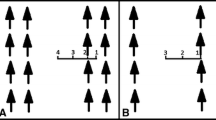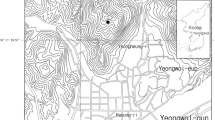Abstract
The aim of this study is to explore the effects of canopy conditions on clump and culm numbers, and the morphological plasticity and biomass distribution patterns of the dwarf bamboo species Fargesia nitida. Specifically, we investigated the effects of canopy conditions on the growth and morphological characteristics of F. nitida, and the adaptive responses of F. nitida to different canopy conditions and its ecological senses. The results indicate that forest canopy had a significant effect on the genet density and culm number per clump, while it did not affect the ramet density. Clumps tended to be few and large in gaps and forest edge plots, and small under forest understory plots. The ramets showed an even distribution under the closed canopy, and cluster distribution under gaps and forest edge plots. The forest canopy had a significant effect on both the ramets’ biomass and biomass allocation. Favourable light conditions promoted ramet growth and biomass accumulation. Greater amounts of biomass in gaps and forest edge plots were shown by the higher number of culms per clump and the diameter of these culms. Under closed canopy, the bamboos increased their branching angle, leaf biomass allocation, specific leaf area and leaf area ratio to exploit more favourable light conditions in these locations. The spacer length, specific spacer length and spacer branching angles all showed significant differences between gaps and closed canopy conditions. The larger specific spacer length and spacer branching angle were beneficial for bamboo growth, scattering the ramets and exploiting more favourable light conditions. In summary, this study shows that to varying degrees, F. nitida exhibits both a wide ecological amplitude and high degree of morphological plasticity in response to differing forest canopy conditions. Moreover, the changes in plasticity enable the plants to optimize their light usage efficiency to promote growth and increase access to resources available in heterogeneous light environments.
Similar content being viewed by others
References
Abe M, Izaki J, Miguchi H, Masaki T, Makita A, Nakashizuka T (2002). The effects of Sasa and canopy gap formation on tree regeneration in an old beech forest. J Veg Sci, 13: 565–574
Abe M, Miguchi H, Honda A, Makita A, Nakashizuka T (2005). Short-term changes affecting regeneration of Fagus crenata after the simultaneous death of Sasa kurilensis. J Veg Sci, 16: 49–56
Chen J S, Dong M, Yu D, Liu Q (2004). Clonal architecture and ramet population characteristics of Lysimachia congestiflora growing under different light conditions. Chinese Journal of Applied Ecology, 15(8): 1383–1388 (in Chinese)
Denslow J S, Newell E, Ellison AM (1991). The effect of understory palms and cyclanths on the growth and survival of Inga seedlings. Biotropica, 23: 225–234
Dong M (1996). Clonal growth in plants in relation to resource heterogeneity: foraging behavior. Acta Botanica Sinica, 38(10): 828–835 (in Chinese)
Franklin J F, Maeda T, Oshumi T, Matsui M, Yagi H, Hawk G M (1979). Subalpine coniferous forests of central Honshu, Japan. Ecol Monogr, 49: 311–334
Griscom B W, Ashton P M S (2003). Bamboo control of forest succession: Guadua sarcocarpa in southeastern Peru. For Ecol Manage, 175: 445–454
Holz C A, Veblen T T (2006). Tree regeneration responses to Chusquea montana bamboo die-off in a subalpine Nothofagus forest in the southern Andes. J Veg Sci, 17: 19–28
Iida S (2004). Indirect negative influence of dwarf bamboo on survival of Quercus acorn by hoarding behavior of wood mice. For Ecol Manage, 202: 257–263
Li Z X, Zheng H (2004). The spatial distribution characteristics of throughfall under Abies faxoniana forest in the Wolong Nature Reserve. Acta Ecologica Sinica, 24: 1015–1021 (in Chinese)
Liu Q, Li Y X, Zhong Z C (2004). Effects of moisture availability on clonal growth in bamboo Pleioblastus maculata. Plant Ecol, 173: 107–113
Ma W L, Zhong Z C (1998). Morphological adaptability of clonal herb Iris japonica to changed light condition. Chinese Journal of Applied Ecology, 9(1): 23–26 (in Chinese)
Nakashizuka T (1987). Regeneration dynamics of beech forests in Japan. Vegetation, 69: 169–175
Narukawa Y, Yamamoto S (2001). Effects of dwarf bamboo (Sasa sp.) and forest floor microsites on conifer seedling recruitment in a subalpine forest, Japan. Forest Ecology and Management, 163: 61–70
Noguchi M, Yoshida T (2004). Tree regeneration in partially cut conifer-hardwood mixed forests in northern Japan: roles of establishment substrate and dwarf bamboo. For Ecol Manage, 190: 335–344
Noguchi M, Yoshida T (2005). Factors influencing the distribution of two co-occurring dwarf bamboo species (Sasa kurilensis and S. senanensis) in a conifer-broadleaved mixed stand in northern Hokkaido. Ecol Res, 20: 25–30
Qin Z S, Taylor A H, Cai X S (1993). Bamboo and Forest Dynamic Succession in the Ecological Environment of Giant Panda in Wolong. Beijing: China Forestry Press, 13, 30–57, 245–318, 343–375 (in Chinese)
Reid D G, Taylor A H, Hu J C, Qin Z S (1991). Environmental influences on Bashania fangiana bamboo growth and implications for giant panda conservation. Journal of Applied Ecology, 28: 855–868 (in Chinese)
Song L X, Tao J P, Wang W, Xi Y, Wang Y J, Ran C Y (2006). The ramet population structures of the clonal bamboo Fargesia nitida in different canopy conditions of subalpine dark coniferous forest in the Wolong Nature Reserve. Acta Ecologica Sinica, 26(3): 730–736 (in Chinese)
Tabarelli M, Mantovani W (2000). Gap-phase regeneration in a tropical montane forest: the effects of gap structure and bamboo species. Plant Ecol, 148(2): 149–155
Takahashi K, Uemura S, Suzuki J I, Hara T (2003). Effects of understory dwarf bamboo on soil water and the growth of overstory trees in a dense secondary Betula ermanii forest, northern Japan. Ecol Res, 18: 767–774
Taylor A H, Huang J Y, Zhou S Q (2004). Canopy tree development and undergrowth bamboo dynamics in old-growth Abies-Betula forests in southwestern China: a 12-year study. For Ecol Manage, 200: 347–360
Taylor A H, Jang S W, Zhao L J, Liang C P, Miao C J, Huang J Y (2006). Regeneration patterns and tree species coexistence in oldgrowth Abies-Picea forests in southwestern China. For Ecol Manage, 223: 303–317
Taylor A H, Qin Z (1988)a. Regeneration patterns in old-growth Abies-Betula forests in the Wolong Natural Reserve, Sichuan China. J Ecol, 76: 1204–1218
Taylor A H, Qin Z (1988)b. Tree replacement patterns in subalpine Abies-Betula forests in Wolong Natural Reserve, China. Vegetation, 78: 141–149
Taylor A H, Qin Z (1992). Tree regeneration after bamboo die-off in Abies-Betula Forests, Wolong Natural Reserve, China. J Veg Sci, 3: 253–260
Taylor A H, Qin Z S, Liu J (1995). Tree regeneration in an Abies faxoniana forest after bamboo dieback, Wang Long Natural Reserve, China. Can J For Res, 25: 2034–2039
Veblen T T, Veblen A T, Schlegel F M (1979). Understorey patterns in mixed evergreen-deciduous Nothofagus forests in Chile. J Ecol, 67: 809–823
Wang J X, Ma Z G (1993). Ecological Studies on Giant Panda’s Main Food Bamboos. Chengdu: Shichuan Scientific and Technical Press, 25–29, 62–87 (in Chinese)
Wang W, Tao J P, Li Z F, Zhang W Y, Ding Y (2004). Gap features of subalpine dark coniferous forest in Wolong Nature Reserve. Chinese Journal of Applied Ecology, 15(11): 1989–1993 (in Chinese)
Widmer Y (1998). Pattern and performance understory bamboos (Chusquea spp.) under different canopy bamboos closures in old-growth oak forest in Costa Rica. Biotropica, 30(3): 400–415
Yu X H, Tao J P, Li Y, Wang Y J, Xi Y, Zhang W Y, Zang R G (2006). Ramet population structure of Fargesia nitida (Mitford) Keng f. et Yi in different successional stands of the subalpine coniferous forest in Wolong Nature Reserve. J Integr Plant Biol, 48: 1147–1153
Zhang S M, Chen Y F, Yu F H, Xing X R, Li L H, Dong M (2003). Clonal growth and clonal morphology of Potentilla reptans var. sericophylla in forest understorey and gap. Acta Phytoecologica Sinica, 27(4): 567–571 (in Chinese)
Author information
Authors and Affiliations
Corresponding author
Additional information
__________
Translated from Acta Ecologica Sinica, 2006, 26(12): 4019–4026 [译自: 生态学报]
Rights and permissions
About this article
Cite this article
Tao, J., Song, L., Wang, Y. et al. Response of clonal plasticity of Fargesia nitida to different canopy conditions of subalpine coniferous forest. Front. Biol. China 3, 463–469 (2008). https://doi.org/10.1007/s11515-008-0062-6
Published:
Issue Date:
DOI: https://doi.org/10.1007/s11515-008-0062-6




